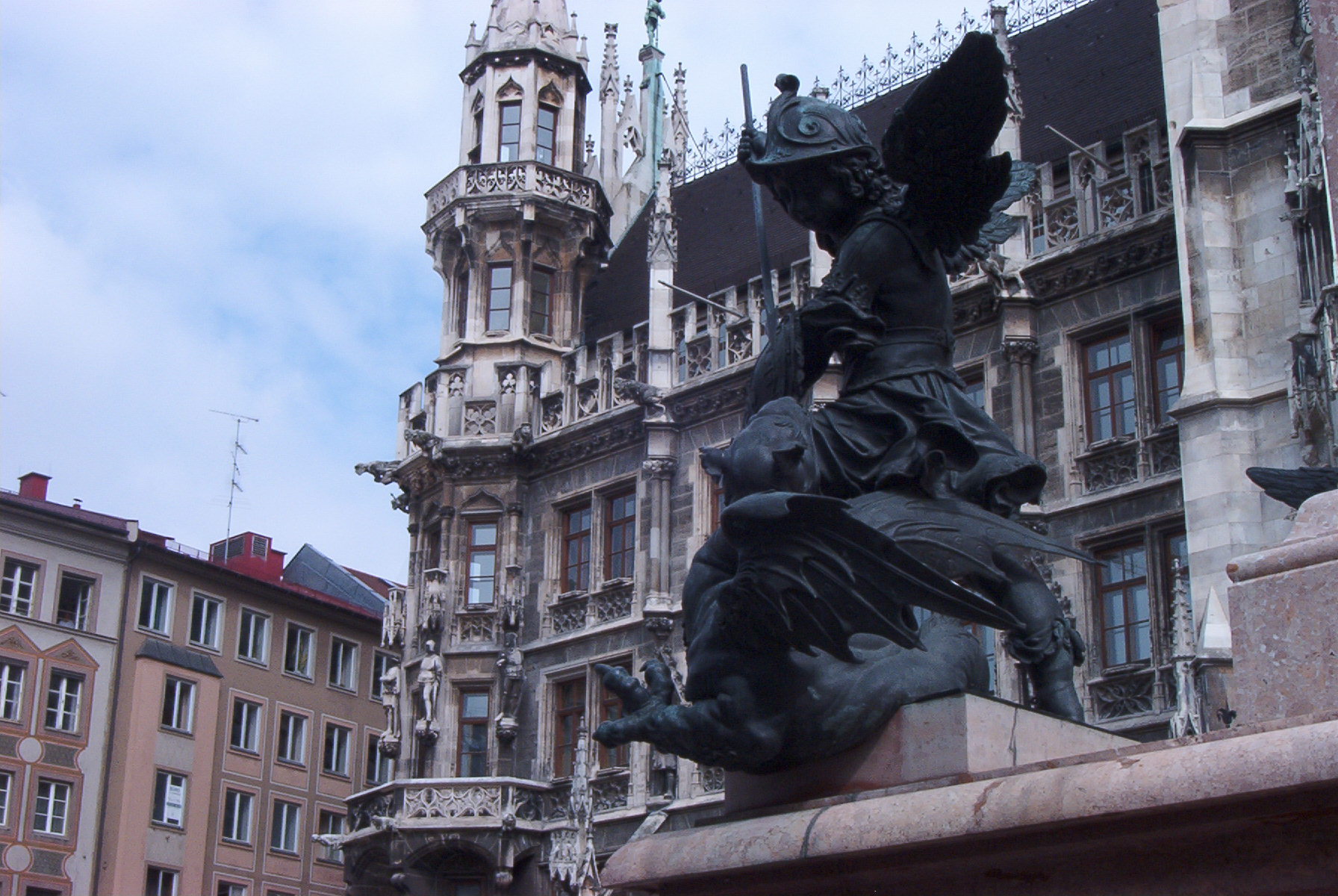
The Southeastern battling cherub fighting a dragon, representing famine. The Neues Rathaus is seen in the background.
The centre of the Altstadt (the old city, which is the downtown core) is Marienplatz. The name means Mary's Square in English, and is named after the Marian column in its centre (Marian columns are common structures in the centres of squares in Europe, usually built to thank God for letting the town survive the plague). This column was built in 1638 to thank God for ending Swedish occupation. The main feature of Marienplatz is the Neues Rathaus (New City Hall), dealt with in a separate gallery on this site.Marienplatz and area
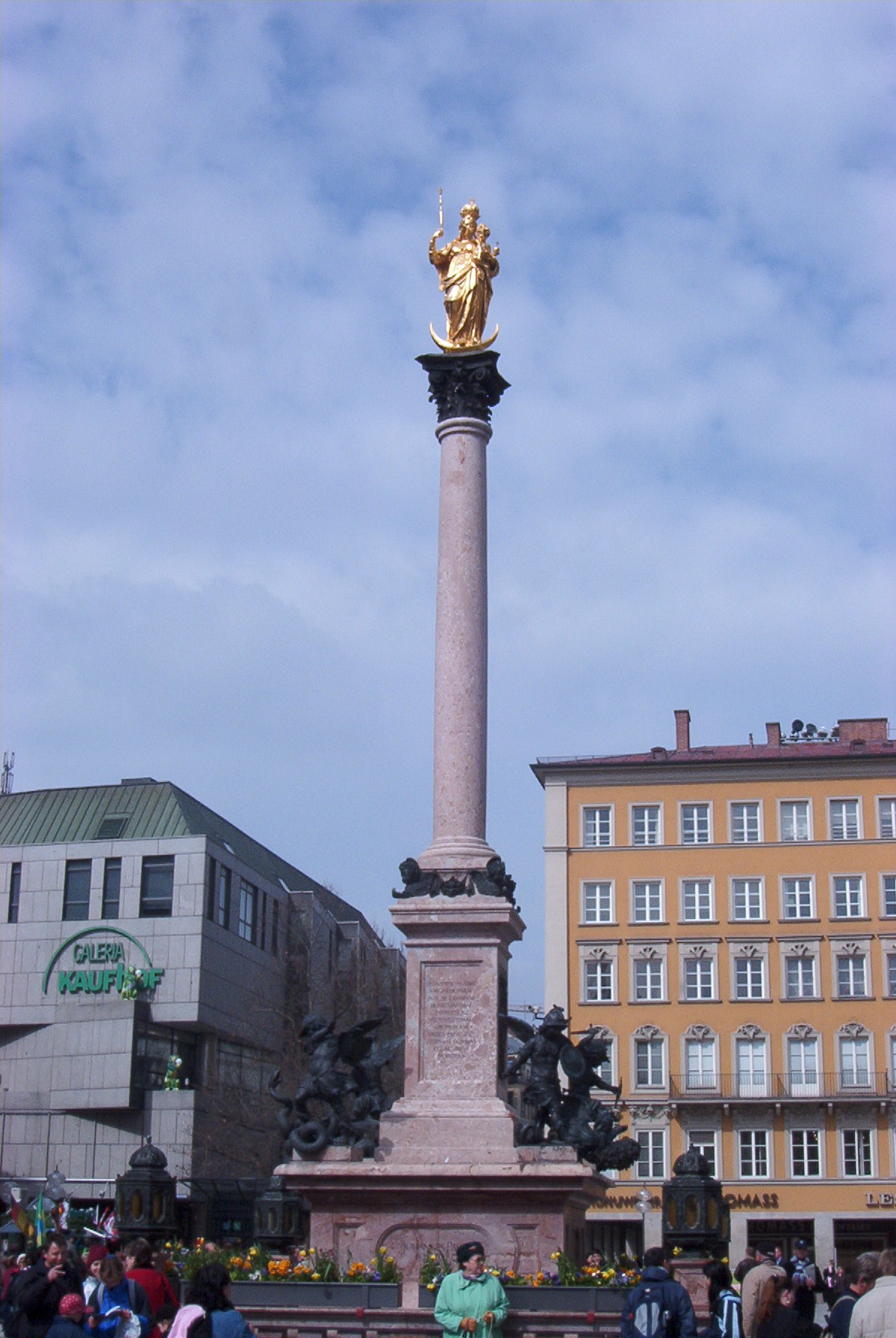

The Southeastern battling cherub fighting a dragon, representing famine. The Neues Rathaus is seen in the background.

Close-up of the battling cherubs on the eastern corners of the base. These ones are battling a serpent (disbelief in God) and a cockatrice (disease).
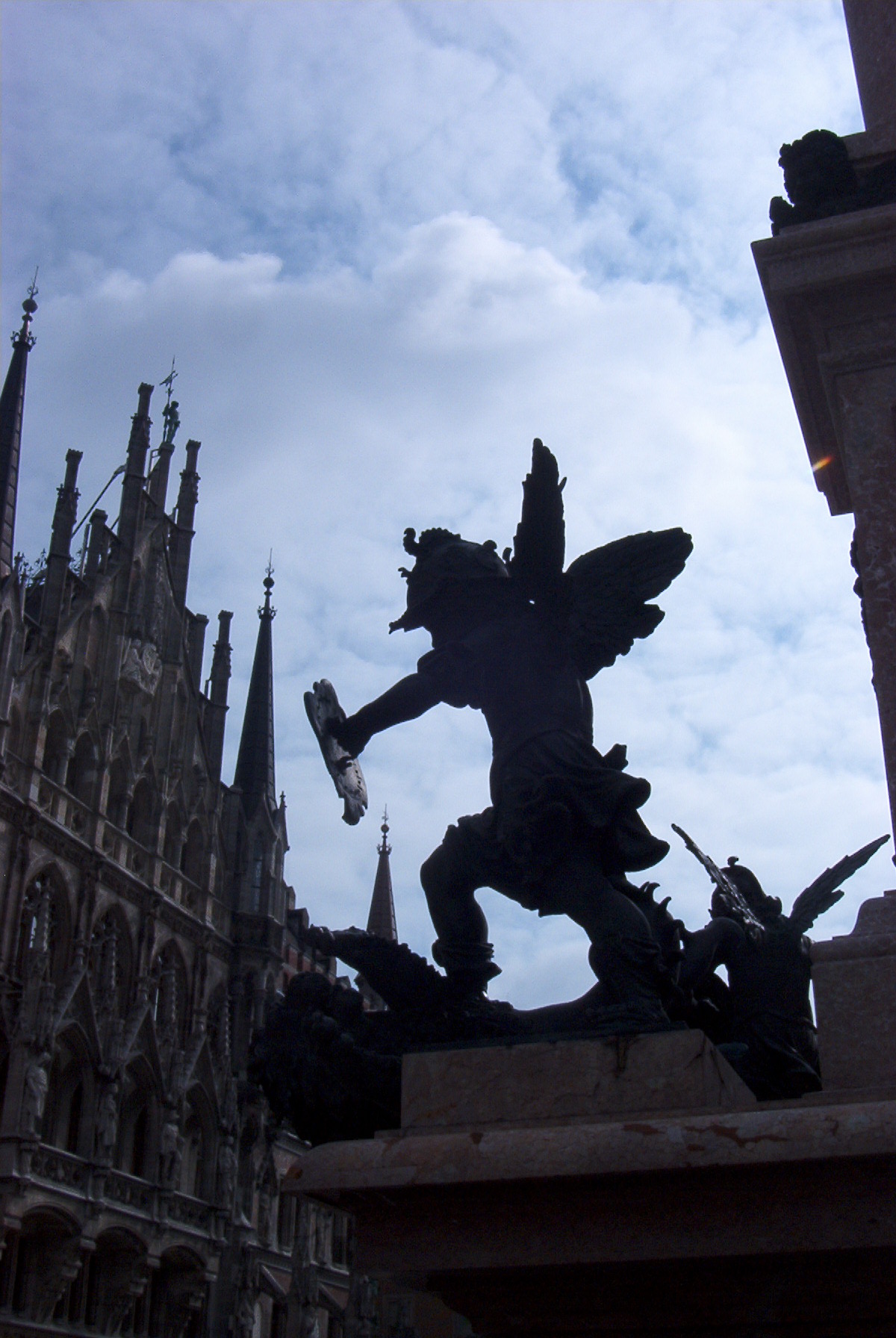
The Northeastern cherub is battling a lion, which represents war. Funnily enough, the lion was also the symbol of the later ruling family, the Wittelsbachs.
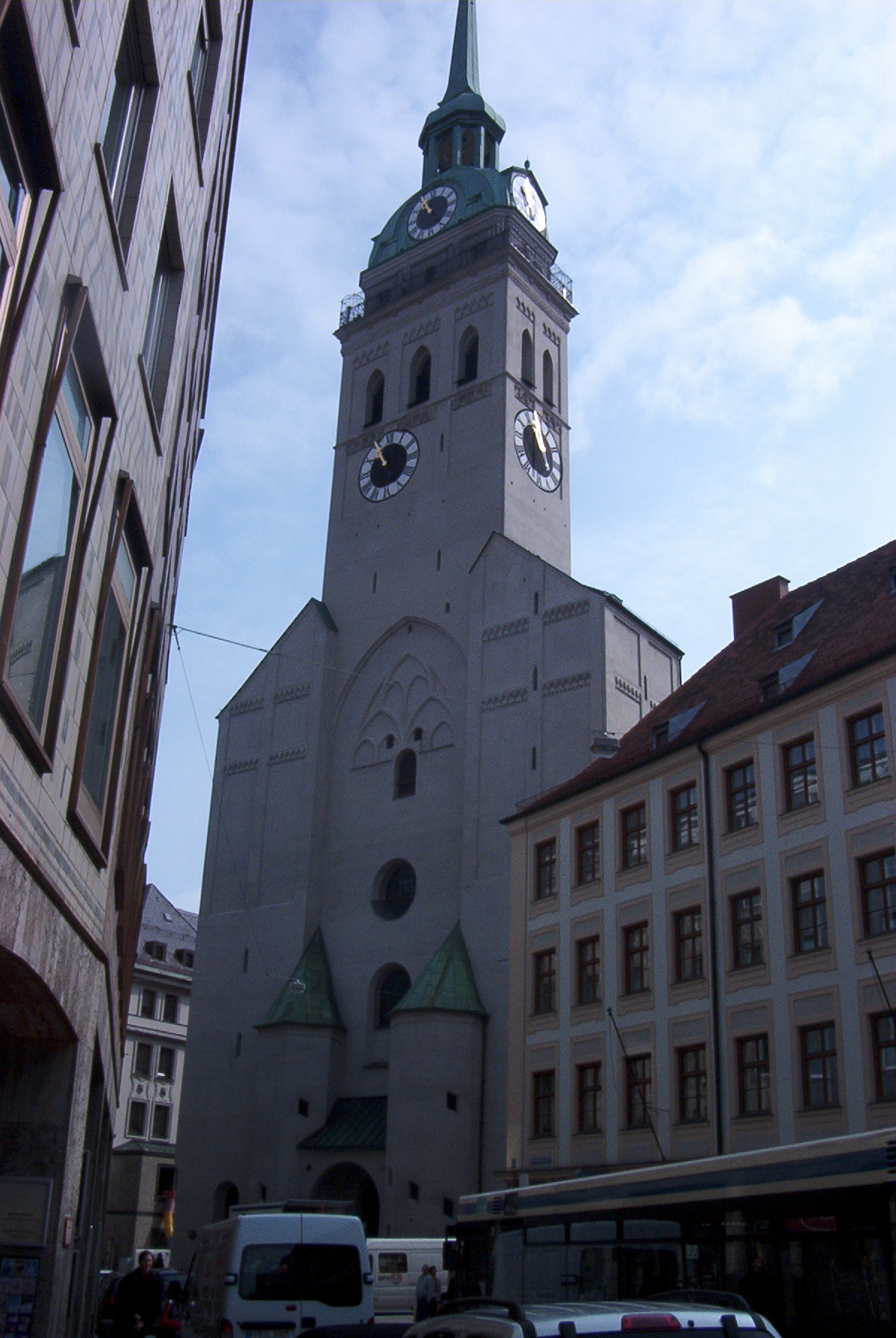
Just South of the Marienplatz is Peterskirche (St. Peter's church), built in the 12th century. This is the church's front taken from the Southeast.
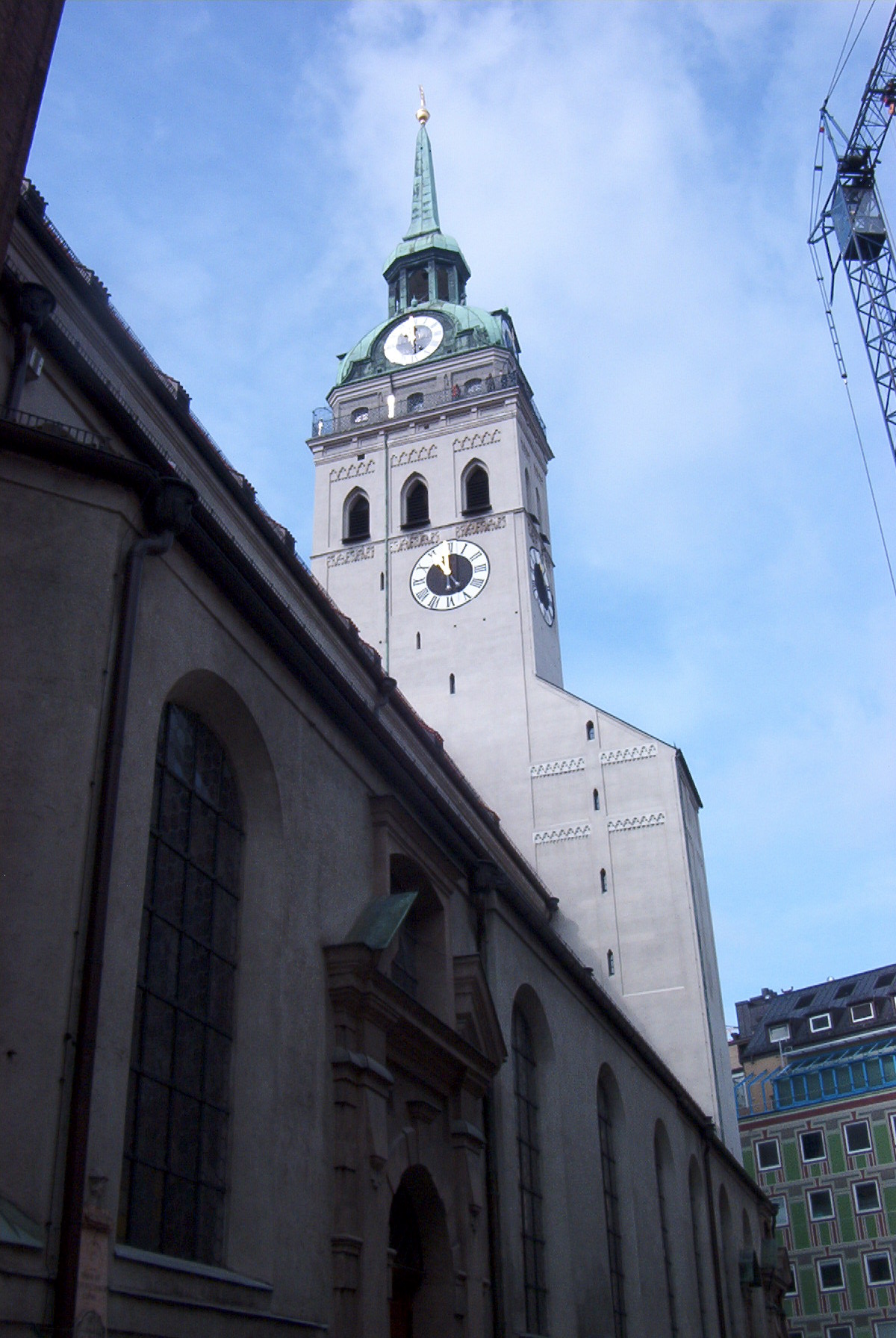
The rear of the Peterskirche steeple.
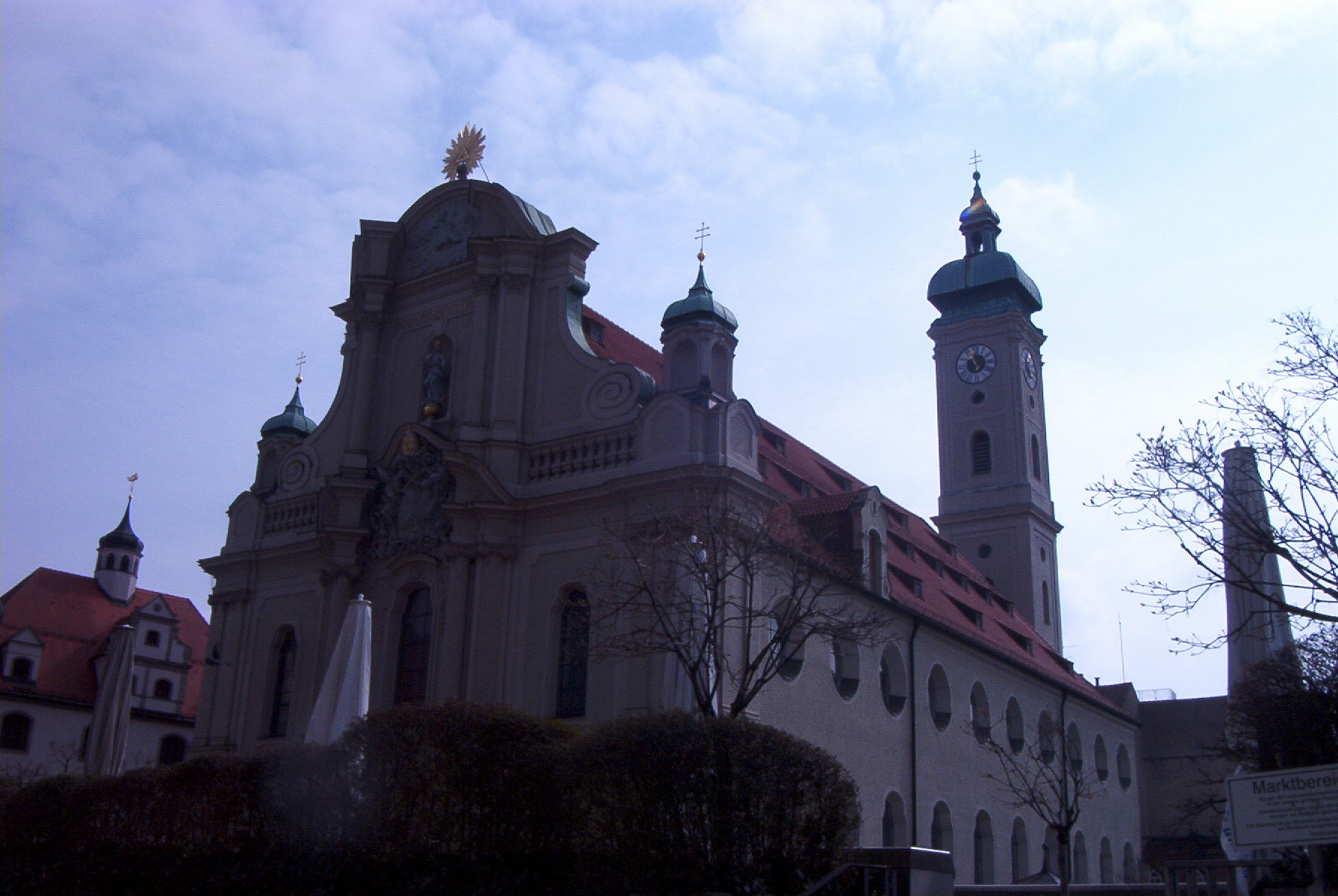
Just East of the Marienplatz, is Heiliggeistkirche (Holy Spirit church). This is taken from the West and slightly South.
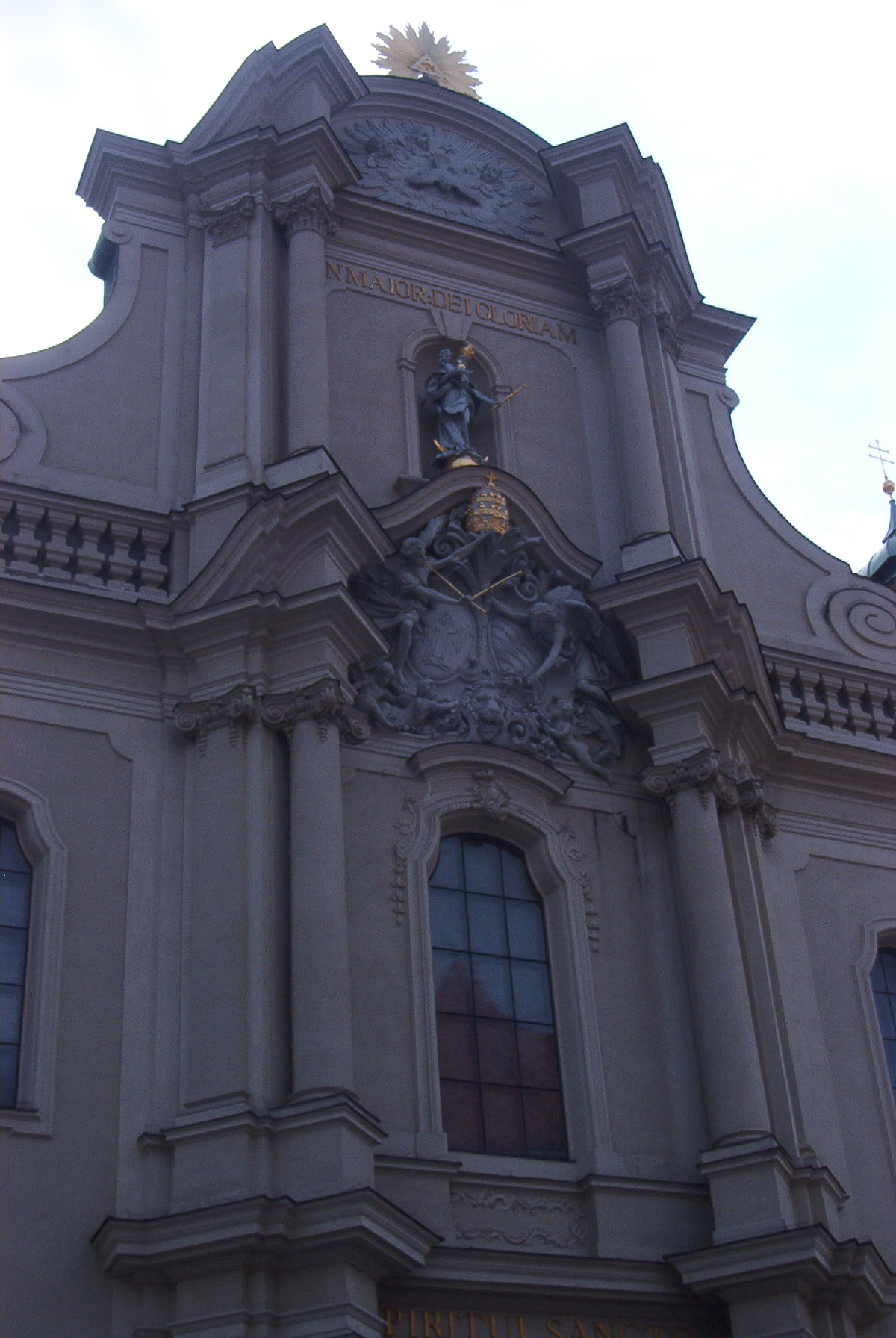
Upper half of the front of the church.
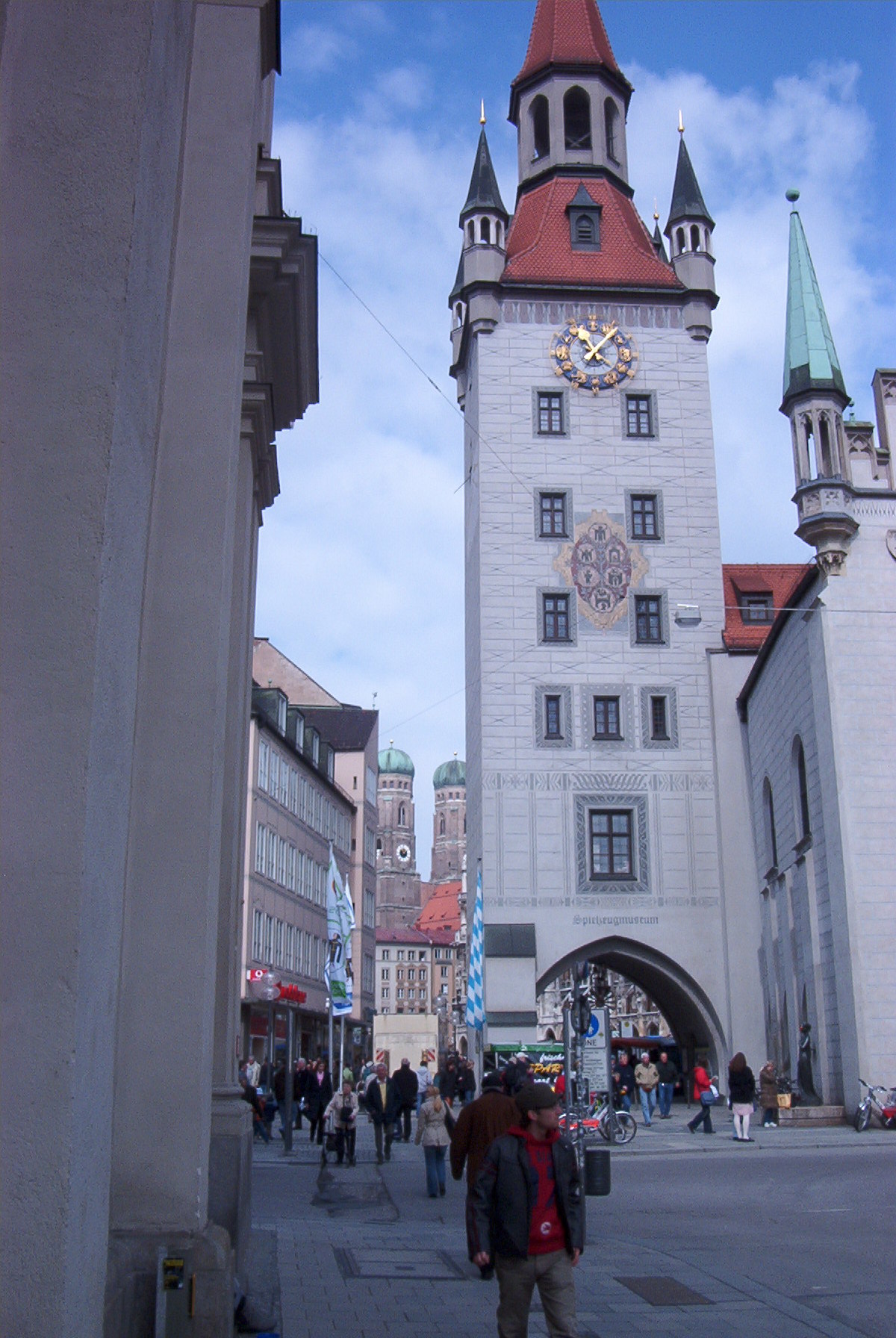
The tower of the Altes Rathaus (Old City Hall). It's currently being used for a toy museum. This shot is taken from the East, Marienplatz is behind.
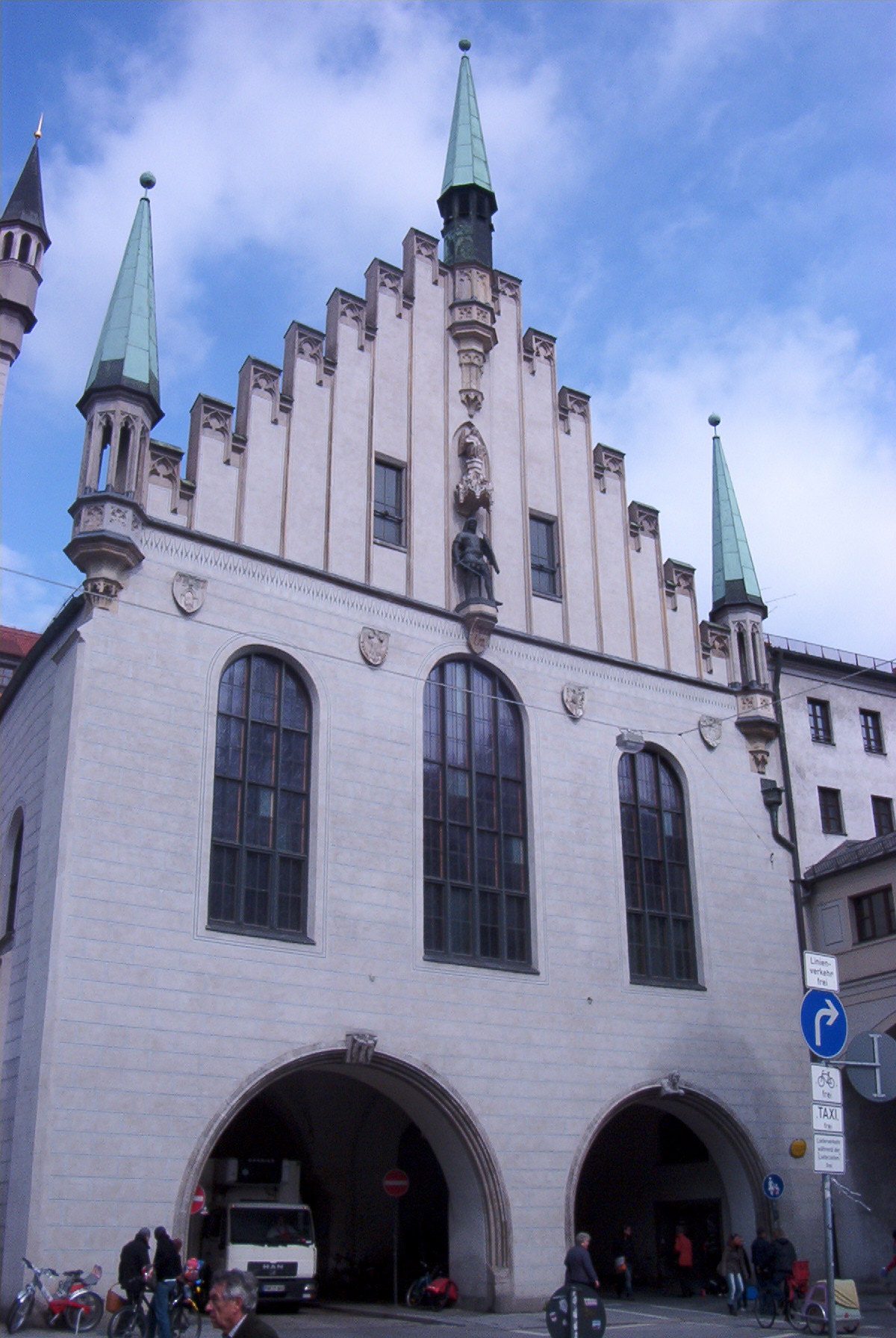
The main body of the Altes Rathaus, again taken from the East.
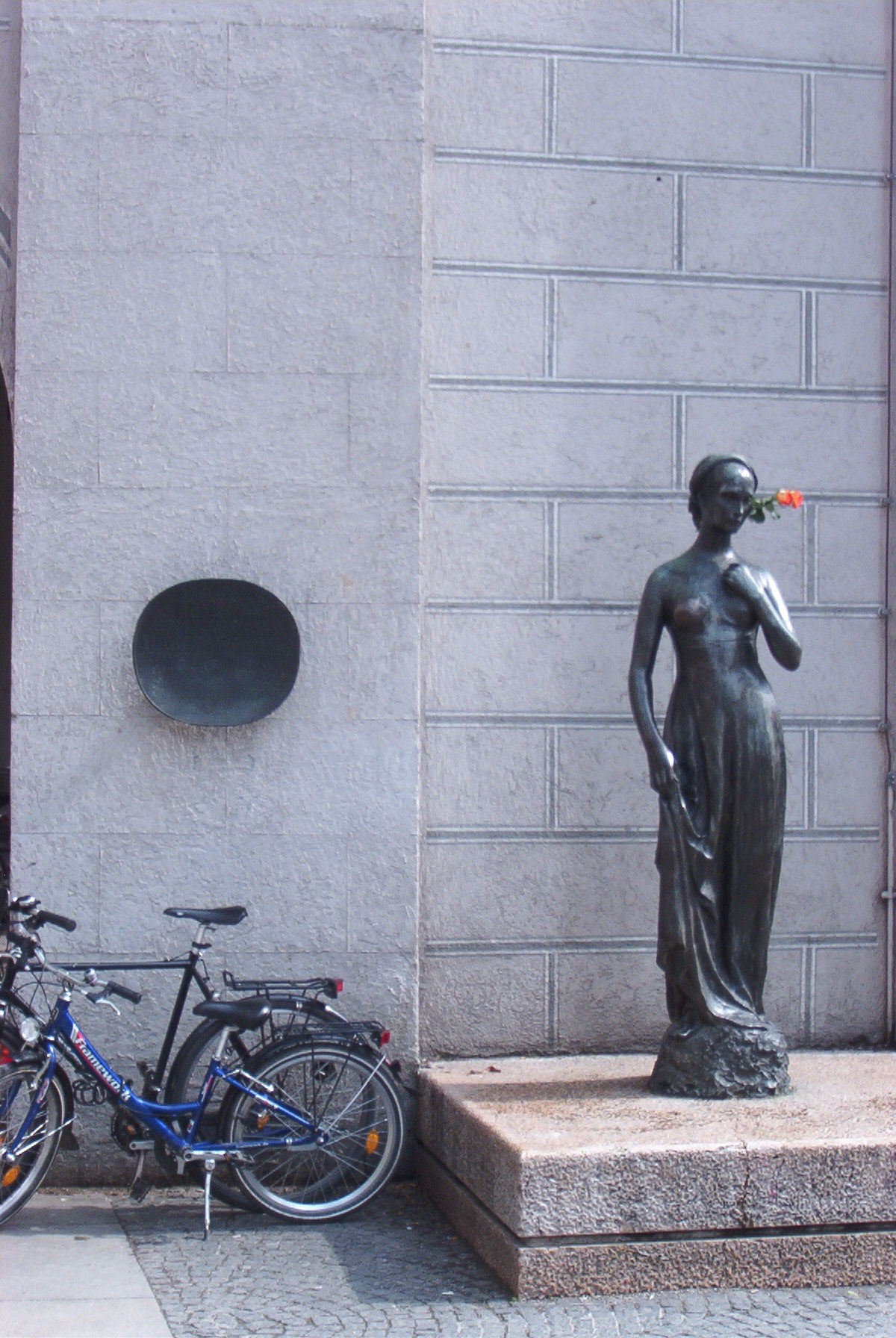
Juliet statue. Verona is one of the cities partnered with München.
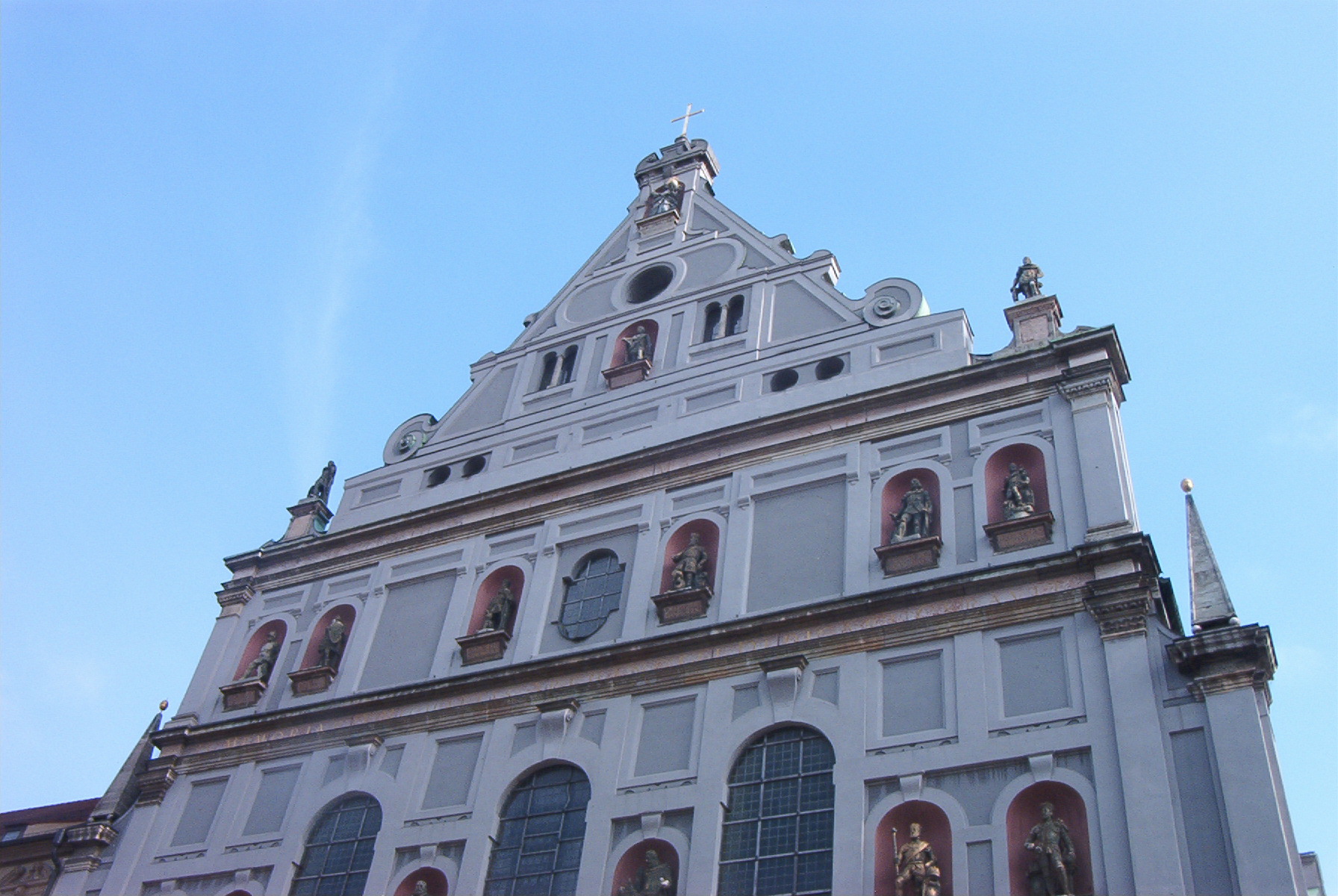
The upper half of Michaelskirche (St. Michael's church), built in 1597.
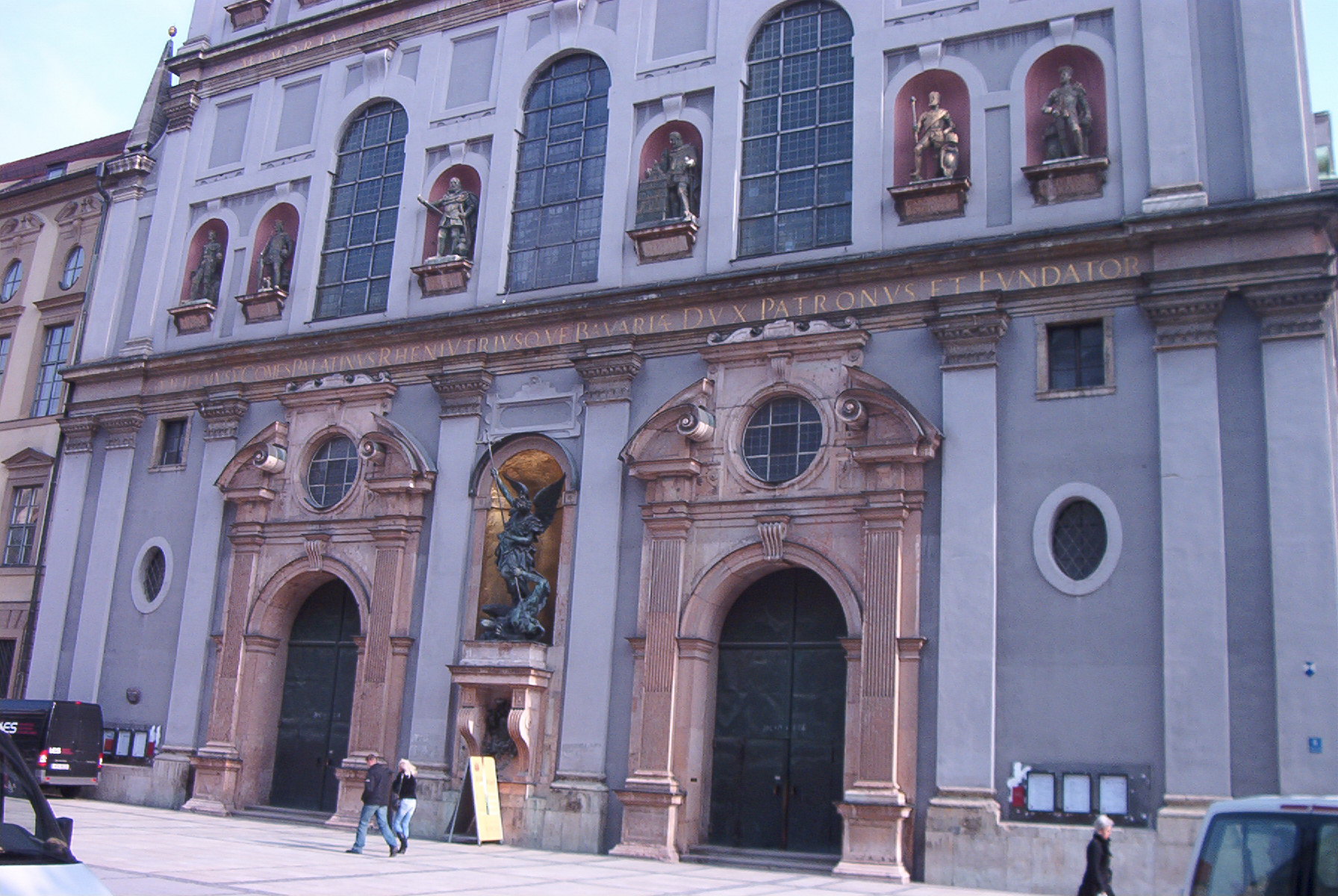
The entrance of Michaelskirche.
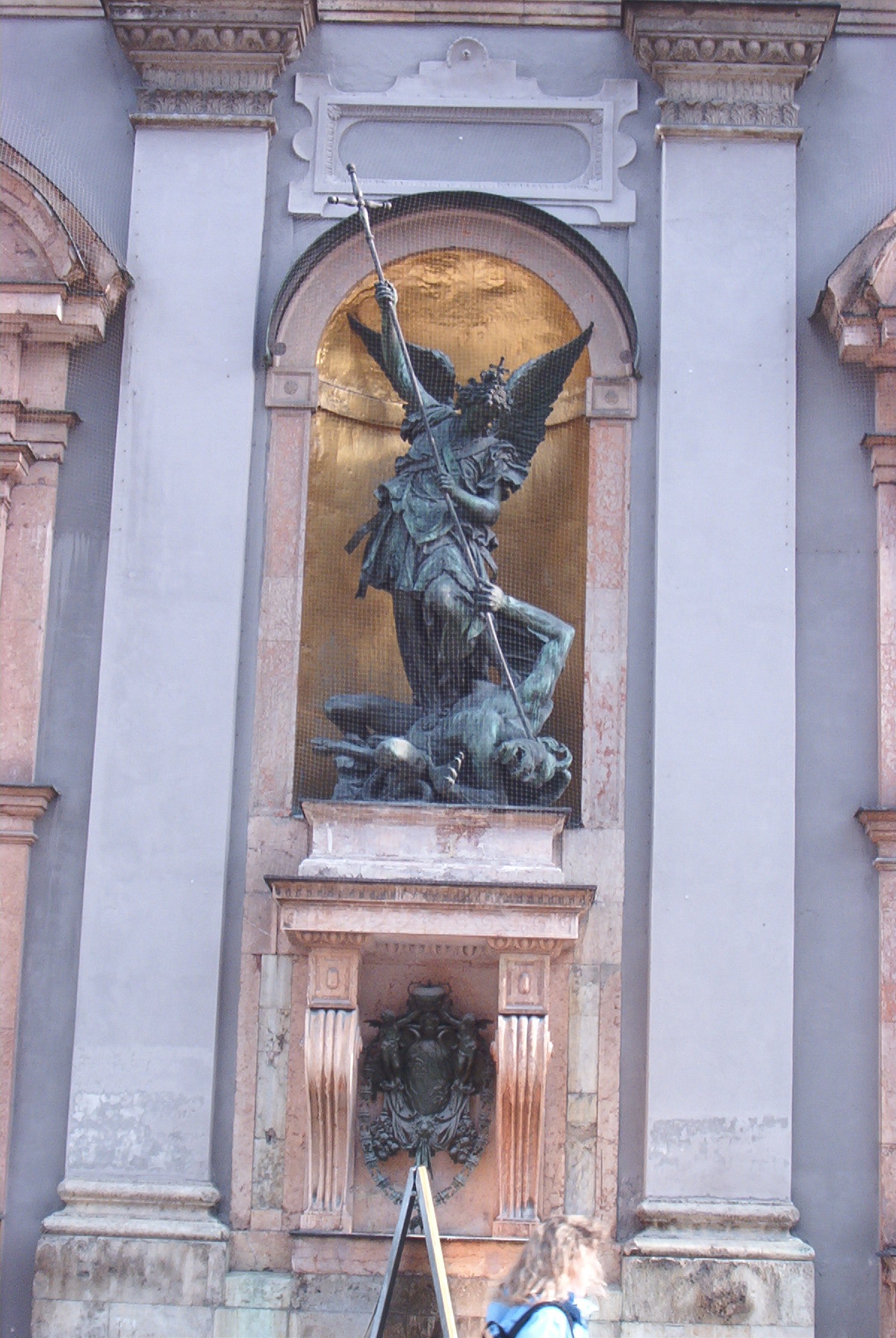
Close-up of the statue between the two doorways.
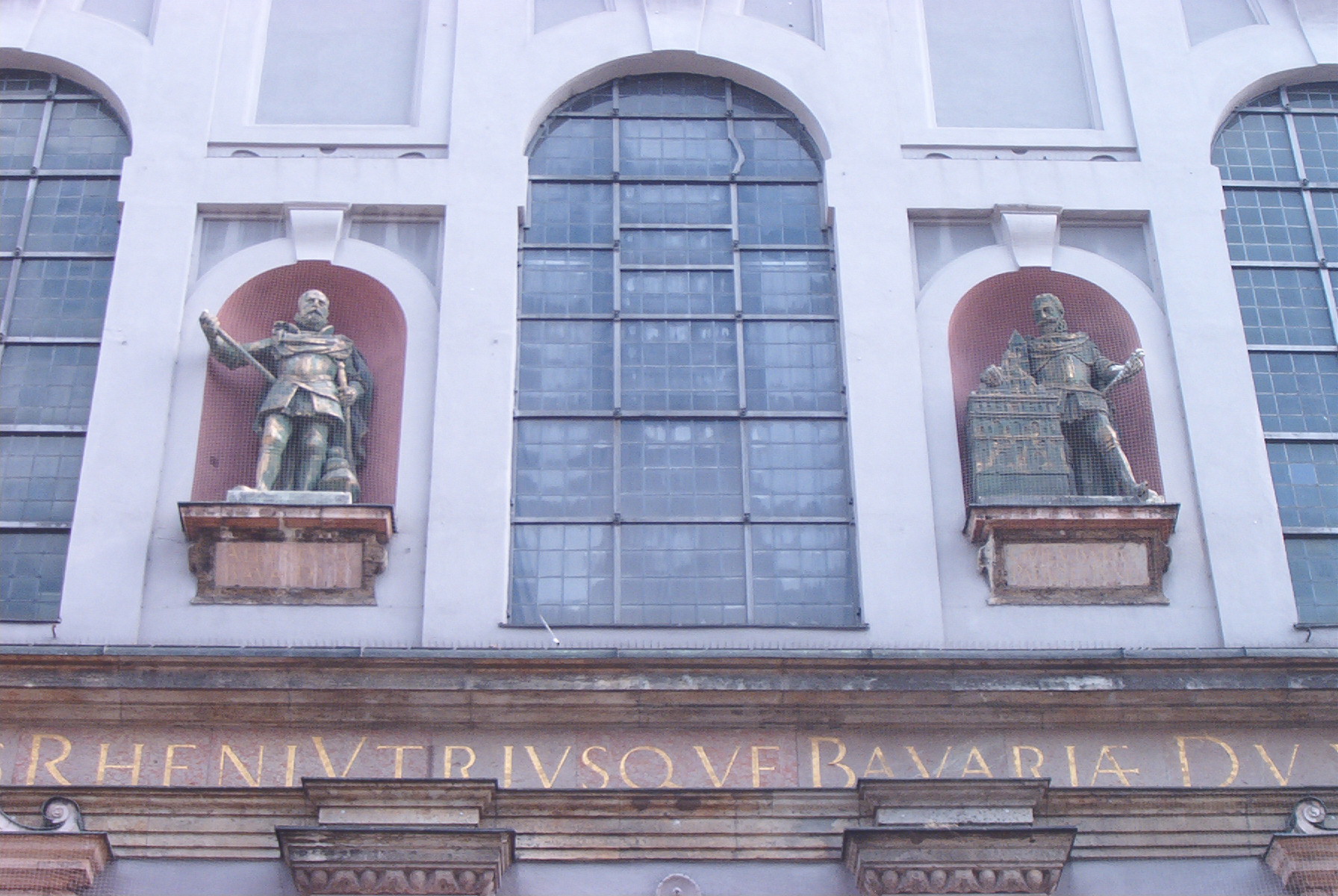
Close-up of some of the figures above the doorways.
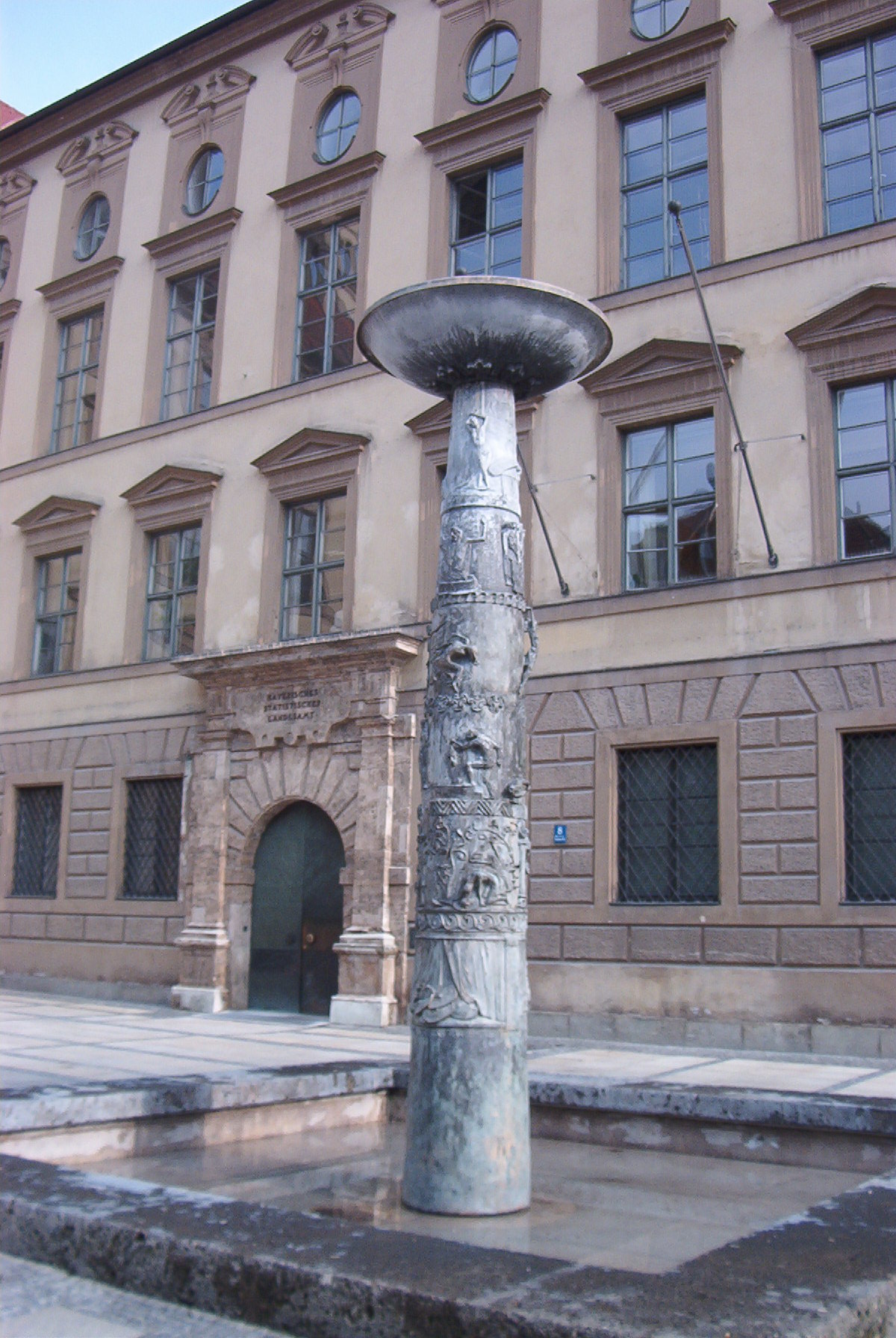
A fountain just West of Michaelskirche in the middle of Neuhauserstrasse, the second of the two streets linking Mariensplatz and Karlsplatz.